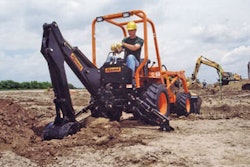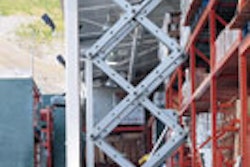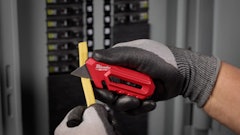I have to admit I've never given much thought to the best way to organize parts in a shop. Since a rental business has so many types of equipment in its inventory, I realize there are myriad parts needed to keep all those machines running and that those parts need to be arranged in some sort of useful order. But the best way to organize them? I didn't have a clue.
When I read "Managing your parts department," by PD Peterson on page 62 of this issue, it not only introduced me to a concept I had not spent a lot of time considering, it also brought home the notion that you can look at a painting all day and still not see the big picture. In his article, Peterson explains three different options for organizing your parts inventory. All have their advantages and disadvantages, but there is one method — which basically involves sorting parts by size — which Peterson makes a solid case for, based on its ability to maximize storage space while enabling parts to be quickly and easily located when needed.
The point is, reading Peterson's article opened my eyes to a dilemma I had never realized faces all of our readers. While sorting parts is not life or death, finding the best solution to the challenge can go a long way toward streamlining service and creating a safer, more efficient and more comfortable shop for your employees. Opening our minds up to new ways of doing things can provide solutions to problems, especially those we might not be consciously aware of until a better idea comes along to let us know.
Another example of a solution to a problem that many take for granted is the battery-powered rebar tier which is featured in this issue's Job Tool Review on page 60. The article explains how these tools can substantially lower the risk of injuries to workers involved in tying rebar. The machine reduces repetitive wrist and forearm movements and minimizes stress on the lower back. Some models, which use an extension handle, even make it possible to do the task without bending over. To your customers who have to tie rebar for a living, being offered a tool that can help reduce injury and fatigue can make all the difference in the world. But before you can offer a solution to a problem, you have to first be aware that there is a problem. And you can only understand your customers' needs by talking and listening to them.
It's common for all of us to face challenges as we go about our daily routines. Many of those challenges appear to be minor and might even register simply as a mild irritation — such as a misplaced part in the shop. Others, like a recurrent back injury due to repetitive movements while working, can affect our quality of life. The point is, we should all pay attention to the challenges we face and strive to find the best solution available. Sometimes it's hard to see the forest for the trees, but if we take a closer look, we might find the answers that can improve our work and our lives.





















